
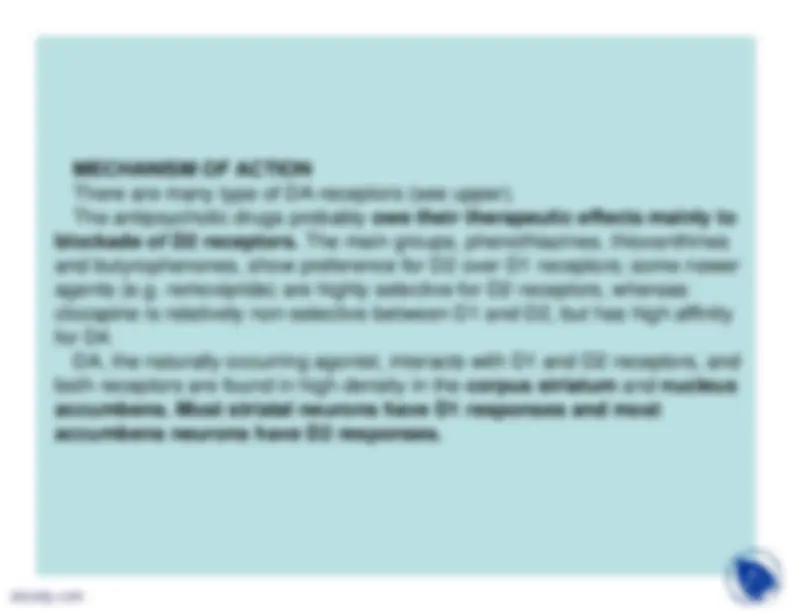
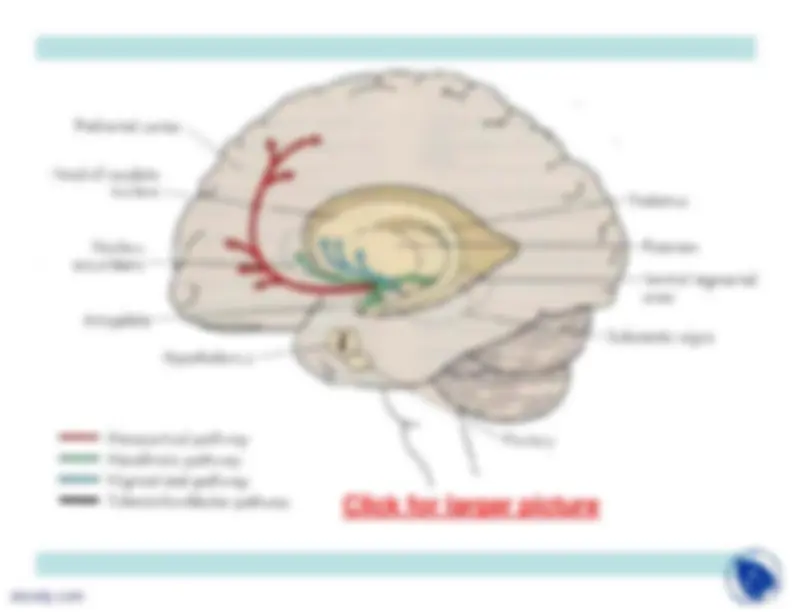
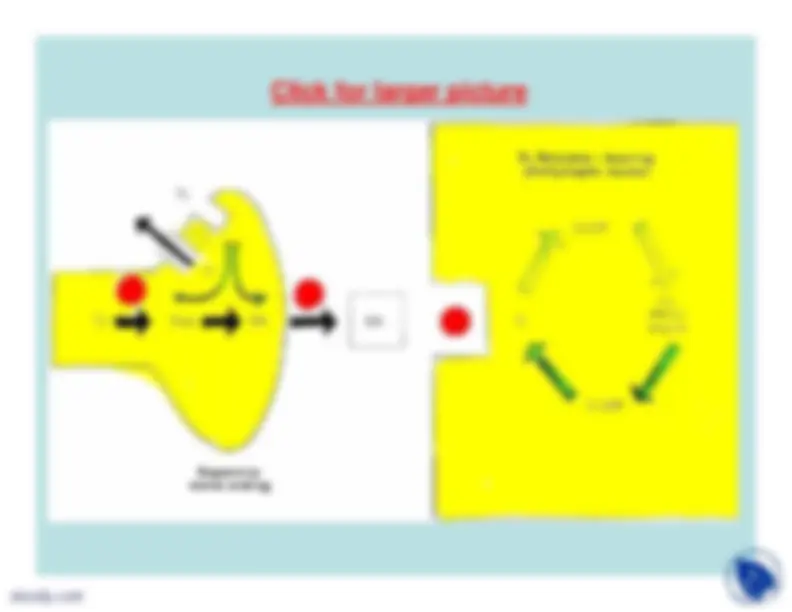
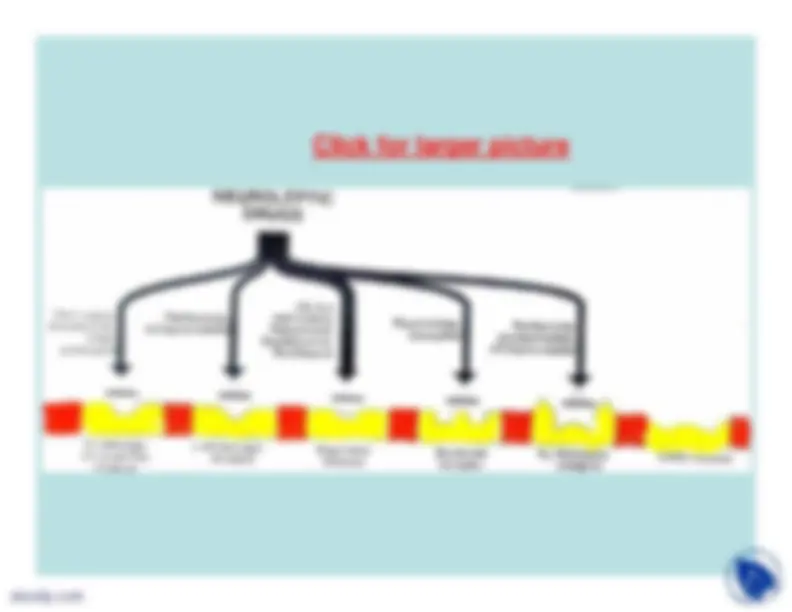
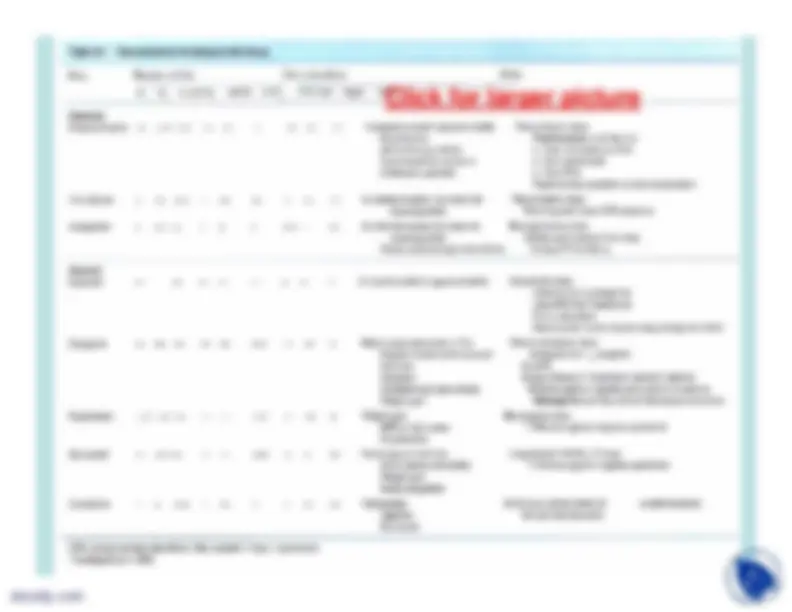
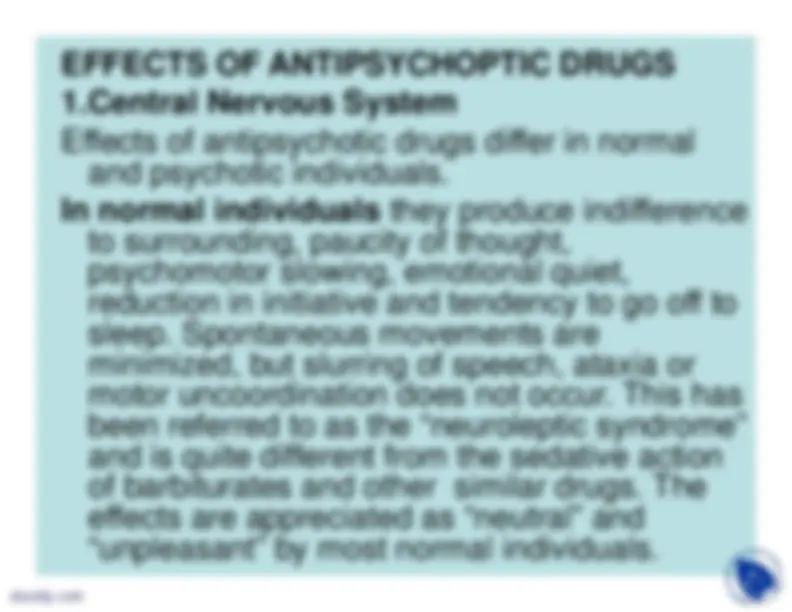
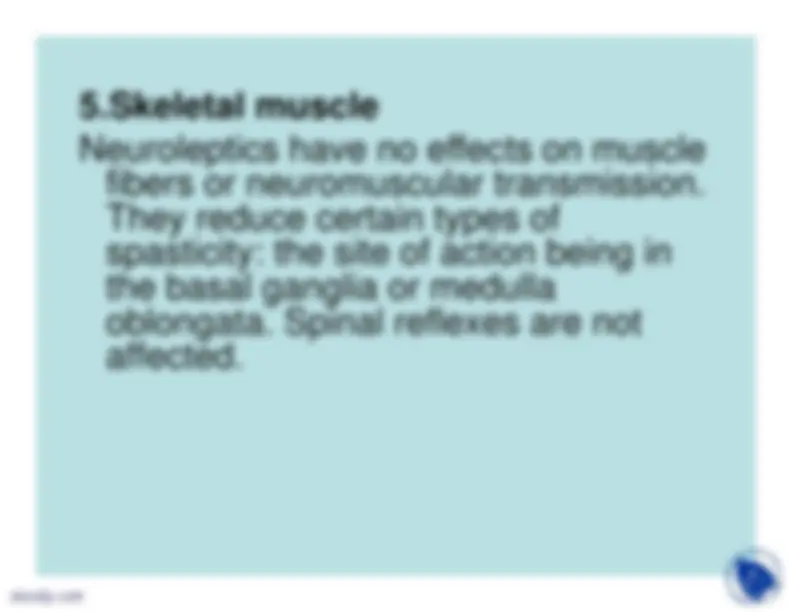
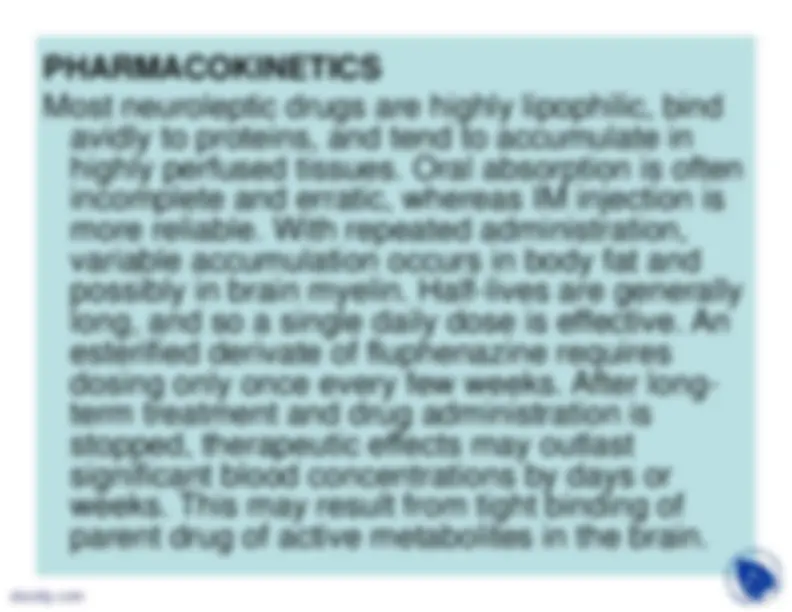
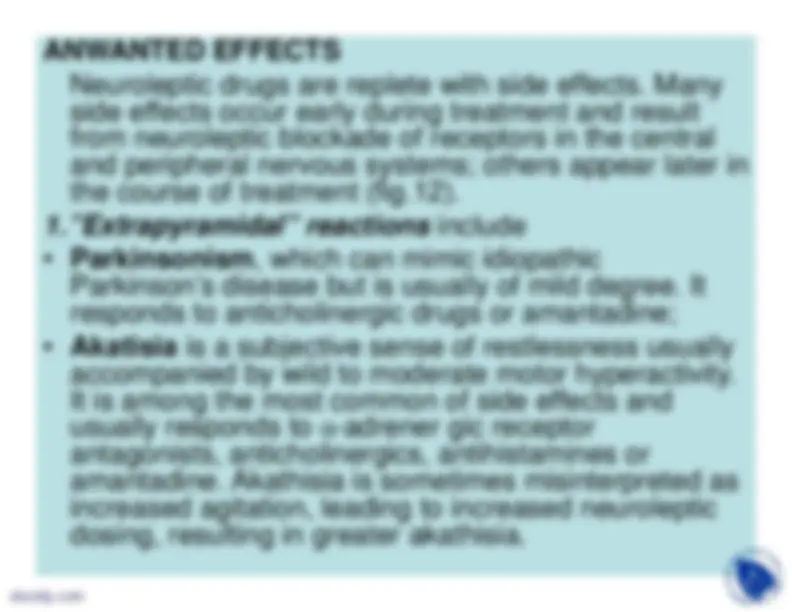
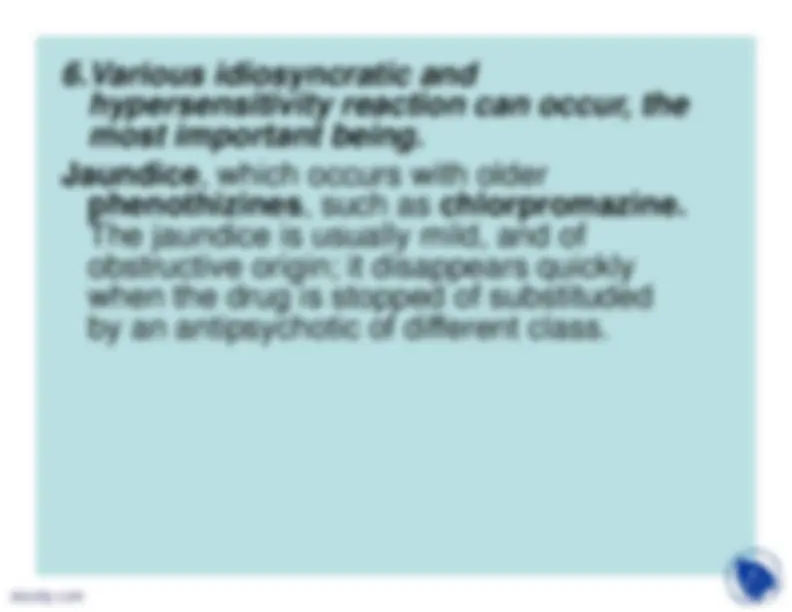
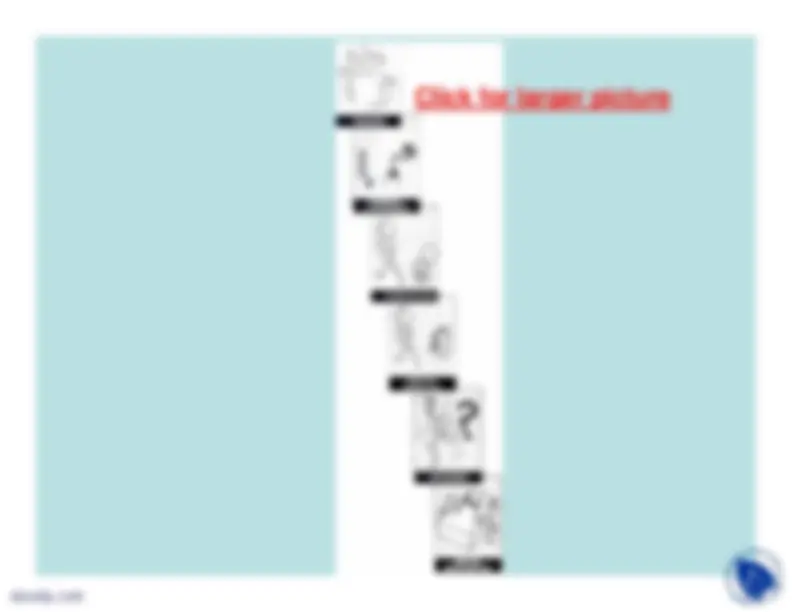

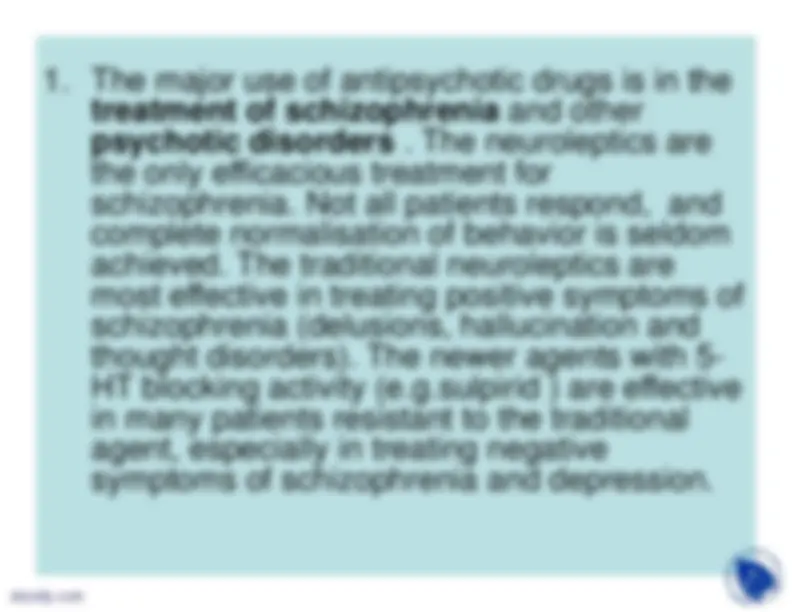


Study with the several resources on Docsity

Earn points by helping other students or get them with a premium plan


Prepare for your exams
Study with the several resources on Docsity

Earn points to download
Earn points by helping other students or get them with a premium plan
Community
Ask the community for help and clear up your study doubts
Discover the best universities in your country according to Docsity users
Free resources
Download our free guides on studying techniques, anxiety management strategies, and thesis advice from Docsity tutors
This lecture belongs to lecture series on Health. Almost all topics related to health are covered in this course. Key points in this lecture are: Classification of Antipsychotic Drugs, Mechanism of Action, Effecs of Antipsychoptic Drugs, Central Nervous System, Catalepsy, Lowers Seizure Threshold, Antiemetic Action, Local Anaesthetic, Skeletal Muscle, Pharmacokinetics
Typology: Slides
1 / 21

This page cannot be seen from the preview
Don't miss anything!














CLASSIFICATION OF ANTIPSYCHOTIC DRUGS^ More than 20 different antipsychotic drugs areavailable for clinical use, but with certainexceptions the differences between them areminor.An important distinction is drawn between themain group, often referred to as classical ortypical antipsychotic drugs atypical antipsychoticdrugs “Atypical” commonly refers to the diminished
tendency of some newer compounds to causeunwanted motor side-effects. Theirpharmacological profile somewhat different fromthat of “classical” pre-1980 drugs(phenothiazines, thioxanthines andbutyrophenones).
Click for larger picture
Fig.
Click for larger picture
Click for larger picture
Although D-receptor blockade occurs rapidly after initial antipsychotic drug treatment, a therapeuticresponse is not usually observed for several weeks. Thetime it takes for the clinical response to be manifested isthought to correlate with the delayed induction ofdepolarization blockade of mesolimbic DA neurons.Induction of depolarization blockade also correlates witha reversal of initial increase in the concentration of DAmetabolites in cerebrospinal fluid.
Click for larger picture
EFFECTS OF ANTIPSYCHOPTIC DRUGS1.Central Nervous System Effects of antipsychotic drugs differ in normal
and psychotic individuals. In normal individuals
they produce indifference
to surrounding, paucity of thought,psychomotor slowing, emotional quiet,reduction in initiative and tendency to go off tosleep. Spontaneous movements areminimized, but slurring of speech, ataxia ormotor uncoordination does not occur. This hasbeen referred to as the “neuroleptic syndrome”and is quite different from the sedative actionof barbiturates and other similar drugs. Theeffects are appreciated as “neutral” and“unpleasant” by most normal individuals.
Catalepsy
arises primarily from acute blockade
of postsynaptic D2 receptors in basal ganglia. Chlorpromazine
lowers seizure threshold
and
can precipitate fits in untreated epileptics. Thepiperazine side chain compounds have a lowerproperty for this action. The temperature controlis knocked off at relatively higher dosesrendering the individual poikilothermic – bodytemperature falls if surrounding are cold. Themedullary respiratory and other vital centers arenot affected, except at high doses. It is verydifficult to produce coma with these drugs.Neuroleptics, except thioridazine, have potent antiemetic action
exerted through the central
trigger zone. However, they are ineffective inmotion sickness.
PHARMACOKINETICS Most neuroleptic drugs are highly lipophilic, bind
avidly to proteins, and tend to accumulate inhighly perfused tissues. Oral absorption is oftenincomplete and erratic, whereas IM injection ismore reliable. With repeated administration,variable accumulation occurs in body fat andpossibly in brain myelin. Half-lives are generallylong, and so a single daily dose is effective. Anesterified derivate of fluphenazine requiresdosing only once every few weeks. After long-term treatment and drug administration isstopped, therapeutic effects may outlastsignificant blood concentrations by days orweeks. This may result from tight binding ofparent drug of active metabolites in the brain.
2.Endocrine effects
DA, released in the median eminence byneurons of the tuberohypophyseal pathwayacts physiologically via D2 receptors as aninhibitor of prolactin secretion. The result ofblocking D2 receptors by antipsychotic drugsis therefore to increase the plasma prolactinconcentration, resulting
breast swelling,
pain and lactation
, which can occur in men
as well as women. Other less pronouncedendocrine changes including a decrease ofgrowth hormone secretion, but these, unlikethe prolactin response, are unimportantclinically.
Click for larger picture
CLINICAL USE AND EFFICACY
Although the underlying cause of psychosis is unknown,
treatment with neuroleptic drugs usually results in a specificimprovement in psychotic sings and symptoms and does notsimply cause sedation or reduce agitation. Modernantipsychotic drugs allow many schizophrenics to leadproductive lives outside hospitals or less restrictive liveswithin hospitals. Unfortunately, for about half of patients withschizophrenia, classical neuroleptics are not completelyeffective in controlling positive symptoms. The progression ofnegative symptoms can lead to progressive deterioration. Inschizophrenia, negative signs and symptoms are generallymore resistant to antipsychotic drug therapy and arecommonly the cause of chronic disability. It is likely thatnegative sings and symptoms have a pathophysiologicaldescription different from that of positive sings and symptomsand are associated more with decreased frontal lobemetabolic rate. In some patients, negative sings andsymptoms way worsen with neutoleptoic treatment. Theincreased efficacy of clozapine compared to traditionalneuroleptics derives primary from its greater efficacy inimproving negative sings and symptoms.